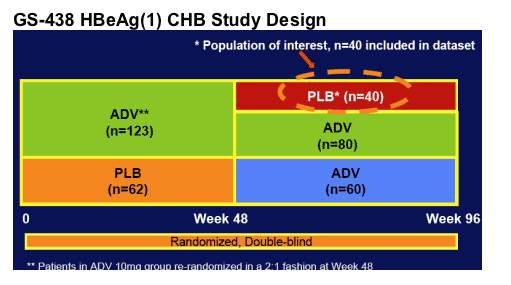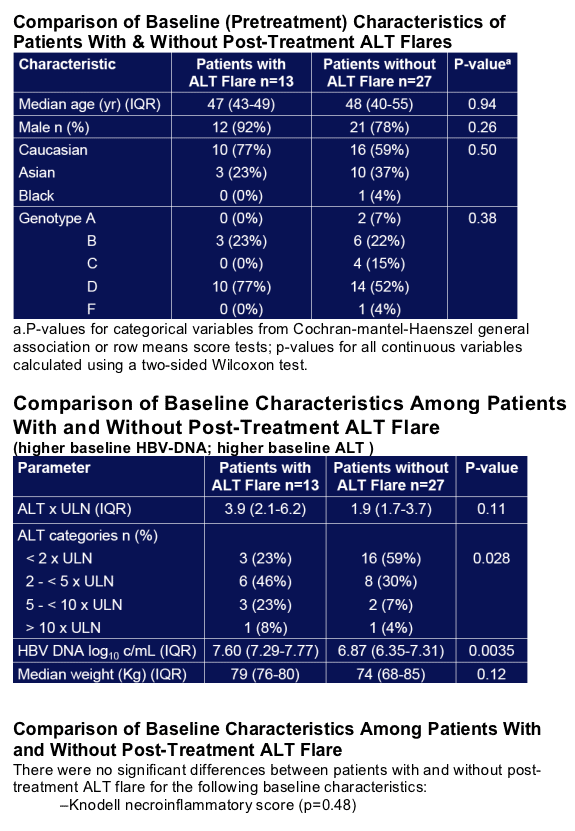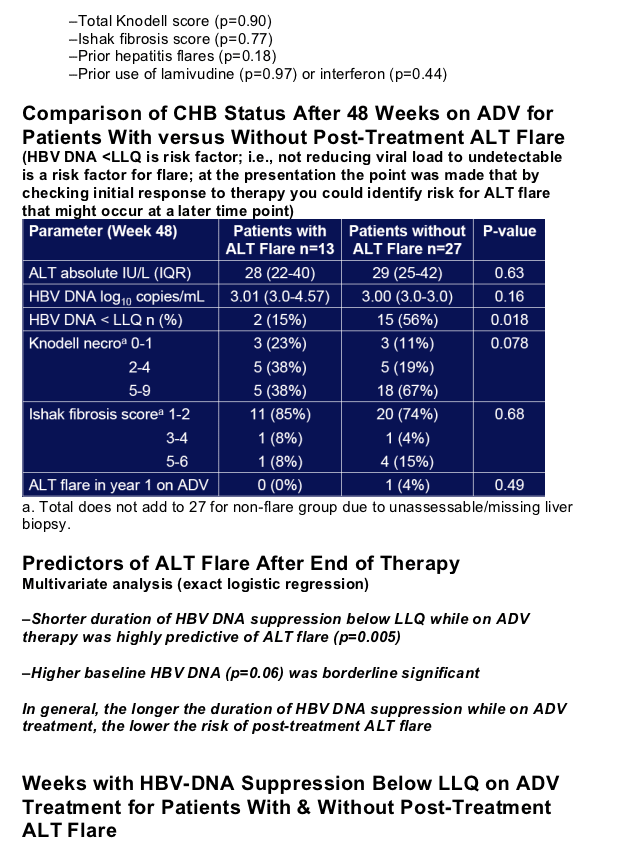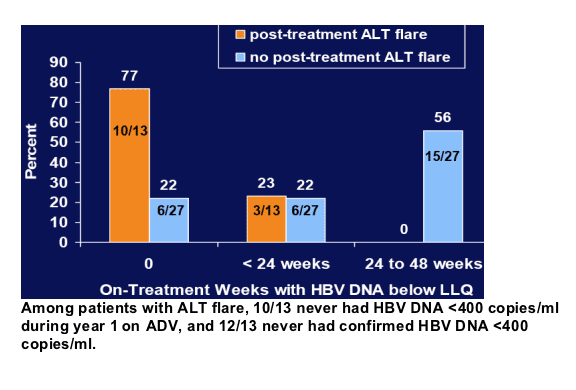 |
 |
 |
| |
Predictive Factors for Exacerbation of Hepatitis B After Discontinuation of Oral Therapy in HBeAg-Negative Patients
|
| |
| |
Reported by Jules Levin
DDW, May 20-25, 2006, Los Angeles
Authors; Y Murata1, S Arterburn2, C-F Pang3, E Mondou2, and F Rousseau2
1Infectious Diseases Unit, School of Medicine, University of Rochester, Rochester, NY, USA; 2Gilead Sciences, Foster City, CA and Durham, NC, USA; Phi Consulting Group, inc, Foster City, Ca, USA
Author Summary
This was a retrospective analysis of HBeAg-negative patients with CHB who had ADV withdrawn by study design.
The incidence of post-treatment ALT exacerbation was significantly increased among those patients who did not reach HBV DNA < 400 copies/mL and those who did not remain suppressed below 400 copies/mL during the first year of ADV treatment .
Higher baseline HBV DNA showed some additional contribution to a higher risk of post-treatment flare (p=0.06).
Introduction
Liver decompensation has been described in patients with chronic hepatitis B (CHB) with low hepatic reserve and post-treatment virologic relapse.
A limited number of reports have been published regarding predictors of ALT flare among patients with CHB in whom treatment with nucleoside analogues was stopped1,2,3
This presentation summarizes the results of a retrospective analysis of a historical data set from the HBeAg-negative pivotal study (GS-98-438) for adefovir dipivoxil (ADV).
In this study, patients received ADV therapy for 1 year and then were randomly assigned to receive placebo (no treatment) or continued ADV in Year 2
Study objective
To determine factors predictive of post-treatment ALT exacerbation in patients with HBeAg-negative chronic hepatitis B who stopped therapy after 1 year of adefovir dipivoxil treatment.
Methods
A retrospective analysis of factors predictive of post-treatment ALT exacerbation (defined as elevation >10 times the upper limit of normal [ULN]) was conducted
HBeAg-negative patients with compensated chronic hepatitis who were enrolled in Study 438 and randomized to ADV 10 mg QD in Year 1 and placebo in Year 2 were evaluated
Serum HBV DNA was measured by the Roche Amplicor Monitor assay
Univariate testing of each parameter for patients with flare/no flare was performed using Cochran-Mantel-Haenszel(CMH)tests for general association or CMH row means scores for categorical variables and Wilcoxon rank sum test for continuous variables
Stepwise logistic regression analyses (entry and exit criteria p=0.10) were performed for flare (ALT > 10 x ULN) versus no flare
Final models were confirmed using exact logistic regression (LR)
Baselineaparameters considered: age, race, gender, weight, ALT, HBV DNA, genotype, Knodell score (total and necroinflammatory), Ishak fibrosis score, history of flares, prior interferon or lamivudine treatment
Week 48 parameters: ALT, HBV DNA, Knodell necroinflammatory score, Ishak fibrosis score, flare in Year 1, and percent of patients with HBV DNA suppression below the lower limit of quantification (LLQ) (400 copies/mL) at Week 48





|
| |
|
 |
 |
|
|